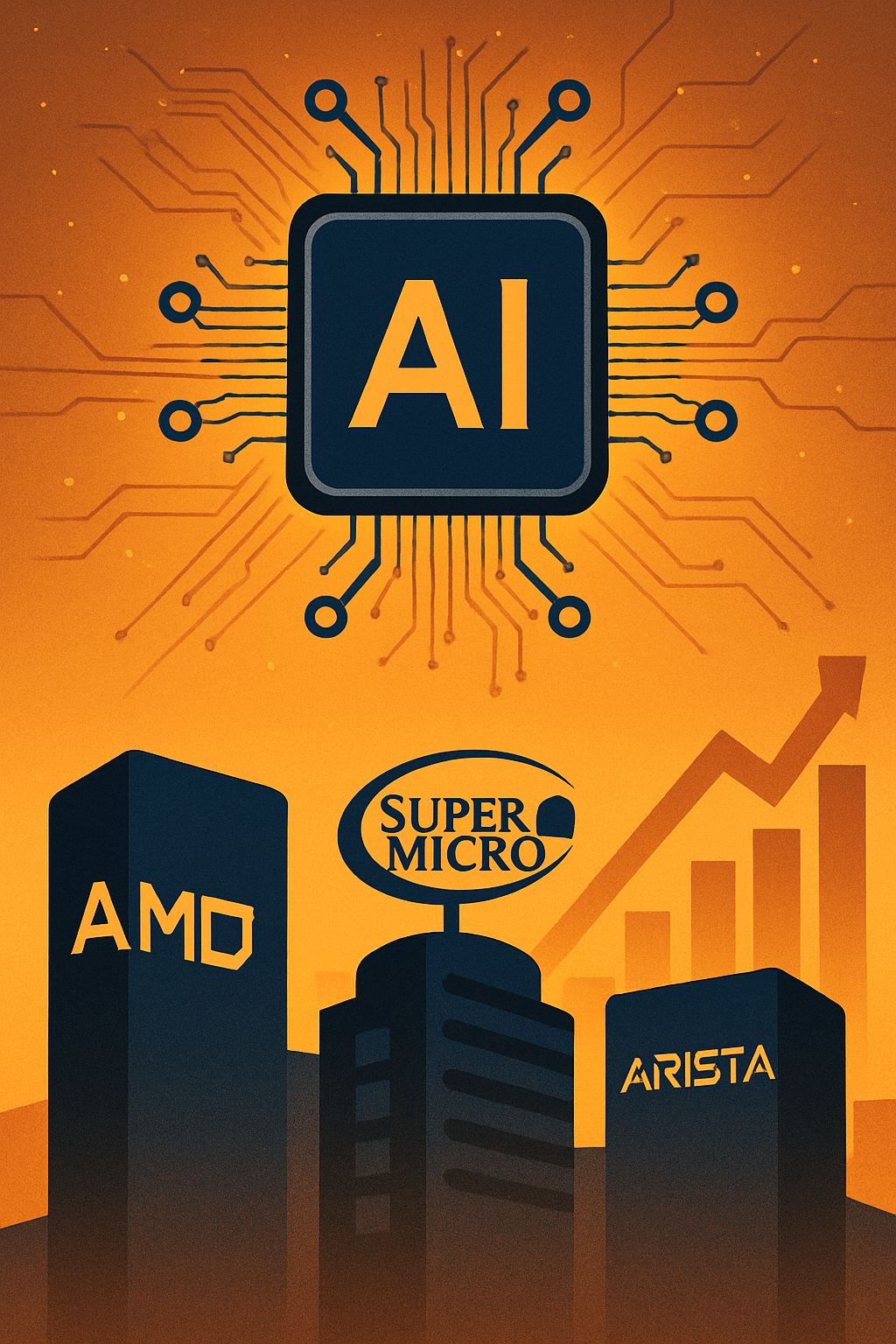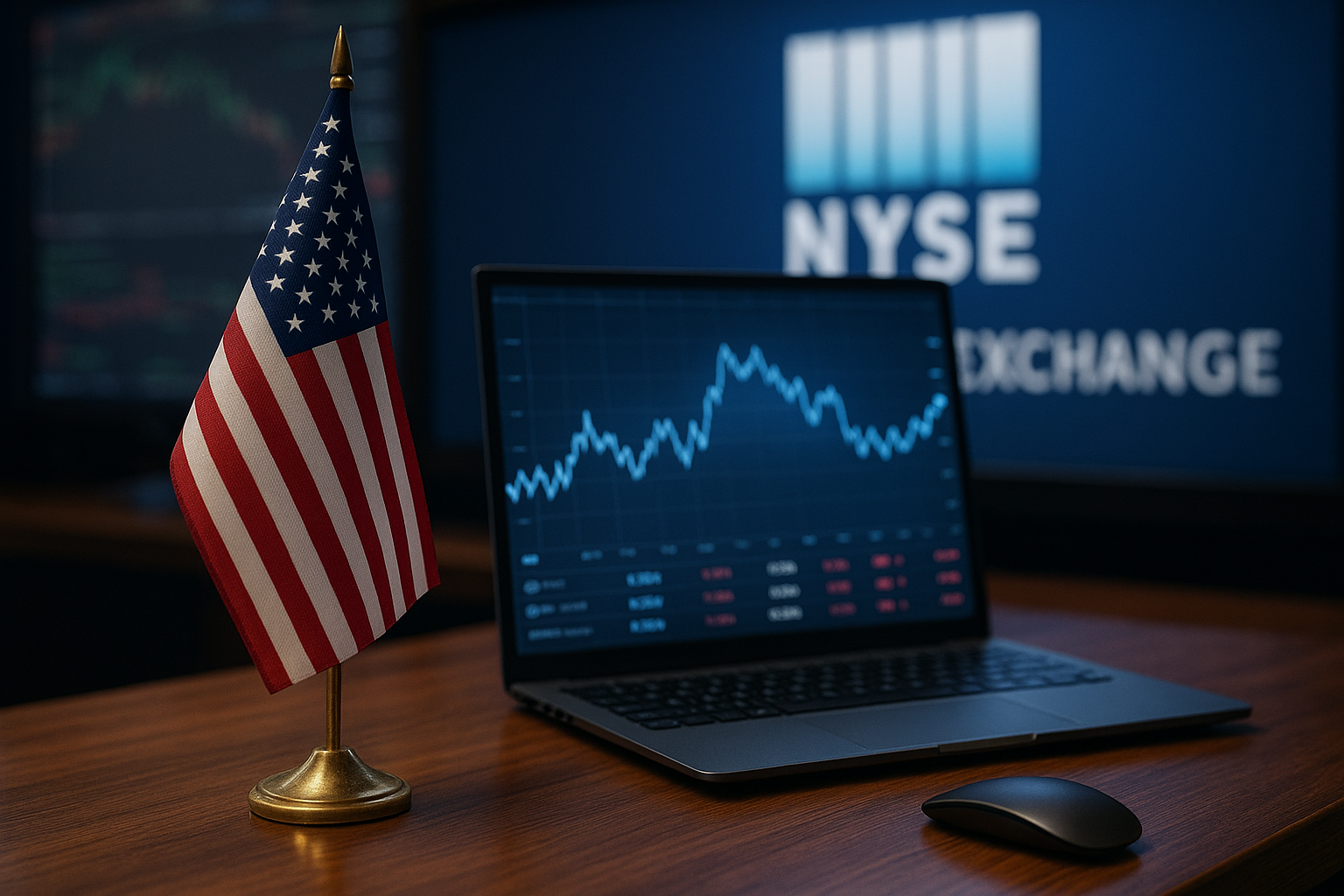After weeks of sideways movement in broader markets, investors are once again turning to artificial intelligence (AI) for direction—and the latest surge in futures is telling. Nasdaq futures jumped early Tuesday, fueled by strong pre-market gains in AI-centric tech leaders like Advanced Micro Devices (AMD), Super Micro Computer (SMCI), and Arista Networks (ANET). While the S&P 500 and Dow futures hovered flat amid lingering macro uncertainties, the AI-heavy Nasdaq roared ahead, signaling a potential new wave of investor confidence in AI infrastructure and semiconductor plays.
This renewed tech momentum is capturing Wall Street’s attention at a time when questions about valuation, earnings durability, and regulatory clarity loom large. And yet, the rally suggests that investor appetite for scalable AI-linked business models remains far from exhausted.
A Market Powered by Machine Learning—and Hype
Tuesday’s pre-market performance follows a broader theme: the AI arms race is no longer speculative—it’s materializing in revenue pipelines. AMD surged over 6% in futures trading after analysts at Bank of America reiterated their “Buy” rating and raised their 12-month price target to $220, citing accelerating demand for data center GPUs and custom AI accelerators.
Similarly, Super Micro Computer, a key supplier of AI-optimized server infrastructure, jumped nearly 7% after it was featured in a bullish Goldman Sachs sector outlook that spotlighted the firm’s “near-monopoly” positioning in high-density rack deployments for major hyperscalers. Arista Networks, known for its AI-ready Ethernet switching, also gained over 5% as institutional flows returned to high-growth hardware.
Despite mixed headlines around inflation, interest rates, and international trade tensions, the market’s AI narrative remains intact—and investors seem willing to ride that wave.
Why This Matters for Investors
While AI stocks have already delivered impressive gains in 2024, many market participants believe we are only in the early innings of an enterprise transformation driven by machine learning, neural networks, and advanced data infrastructure.
According to recent data from McKinsey & Co., over 80% of Fortune 500 companies are increasing their AI budgets in 2025, up from 56% in 2023. Moreover, IDC forecasts global AI infrastructure spending will exceed $180 billion by 2026, with GPUs, networking, and edge compute making up the lion’s share.
This is not just about hype—it’s about fundamental shifts in how companies operate, from logistics and cybersecurity to healthcare and content delivery. The result? Companies that supply the “picks and shovels” of AI—GPUs, AI servers, advanced networking—are being rewarded with investor capital.
Valuation Risks and Momentum Blind Spots
Still, risks remain. AMD’s forward price-to-earnings ratio now exceeds 40x, while Super Micro trades at nearly 5x forward sales—levels that invite scrutiny if growth falters or supply chains tighten. A recent Morgan Stanley note cautioned that “AI infrastructure multiples are now reflecting 2026–2027 earnings,” meaning that execution risk is priced in.
Additionally, regulatory pressure on AI ethics, data governance, and export controls—particularly between the U.S. and China—continues to cast a shadow. Last week’s White House briefing hinted at potential limits on AI chip exports, particularly advanced GPUs, which could impact top-line growth for companies like AMD and Nvidia.
Investors should therefore balance the tailwinds of innovation with the headwinds of policy risk and valuation compression.
Future Trends to Watch
1. Enterprise AI Adoption Metrics:
Watch earnings calls for metrics like “AI-driven revenue share” or “number of AI projects in production.” These are becoming key indicators for institutional positioning.
2. Vertical Integration Across AI Supply Chains:
Expect more M&A activity as companies try to lock in strategic control over components—from chipsets to cooling to networking stacks.
3. Global Policy and Regulation:
U.S.–China AI competition will influence everything from R&D budgets to export bans. Investors should monitor congressional hearings, Commerce Department moves, and European AI Act updates.
Key Investment Insight
Investors seeking exposure to this ongoing trend may consider the following:
- Growth Stocks: AMD (AI chips), SMCI (server hardware), ANET (networking), and NVDA (platform dominance).
- ETFs: Consider sector ETFs like Global X Robotics & AI ETF (BOTZ) or iShares Expanded Tech-Software ETF (IGV) for diversified exposure.
- Options/Hedging: Use options to manage risk if valuation concerns intensify or if policy shifts catch the market off-guard.
For longer-term portfolios, tech exposure with an AI tilt may provide the growth asymmetry needed in an otherwise cautious macro environment.
Stay ahead of the signal. For daily investor intelligence and curated insights on what’s moving markets—from AI to geopolitics—subscribe to MoneyNews.Today and make smarter decisions in real time.





